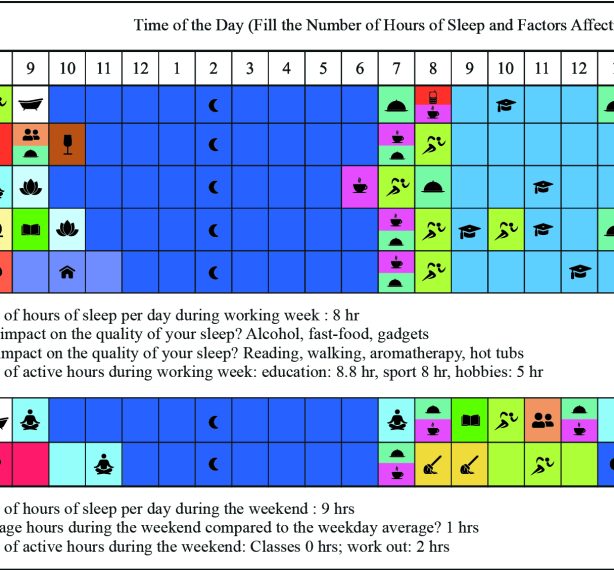
We’re sharing one of the fastest and most effective methods to quickly get yourself in shape: the keto diet, which is an effective method when approached correctly.
On average, a person needs around 1500 calories per day to maintain their energy levels. This is how much the body expends regulating its processes during sleep and wakefulness.
To calculate your individual calorie needs, use this simple formula:
Basal Metabolic Rate = weight × 22 (for women) or × 24 (for men). The result obtained should be multiplied by the coefficient of your lifestyle: predominantly sedentary lifestyle: 1.2; moderately active lifestyle (walking, sports 1-2 times a week): 1.3; fairly active lifestyle (sports 2–3 times a week): 1.4; active lifestyle (sports more than 3 times a week): 1.5; very active lifestyle (daily workouts): 1.7.
For example, a 60kg woman with a sedentary job needs around 1584 calories daily: 60 x 22 x 1.2.
You can improve your metabolism with a few simple methods:
1. Reduce your daily calorie intake by 15–25%.
2. Practice natural intermittent fasting for at least 12 hours overnight. Avoid late-night overeating by having an earlier dinner. Fuel up with hearty breakfasts and lunches, distributing protein evenly between meals. A heavy meal right before bed raises cortisol levels, disrupting overnight recovery and metabolism.
3. Eat wholesome foods, excluding sweets, ready-made sauces, alcohol, and fast food. Focus your diet on minimally processed foods high in protein and fat, and low in carbohydrates. This type of nutrition is also called the keto diet. This diet creates optimal conditions for the body to enter ketosis, where it begins to derive energy from fats rather than carbohydrates, which promotes faster weight loss. Instead of pasta, bread, sweets, and sweet drinks, choose low-carb vegetables and berries. For example, all kinds of cabbage, asparagus, avocado, cucumbers, zucchini, salads, spinach, celery, and mushrooms. These products are high in dietary fiber, which is necessary for maintaining a healthy gut bacteria balance, protecting the liver, and slowing carb absorption to better control appetite and weight.
To retrain the body to get energy from fats, you should get the majority of your daily calories (up to 70–85%) from quality fatty foods. The amount of protein should be up to 20%, and carbohydrates should make up 5–10% of the total calorie intake. Quality fatty foods include grass-fed beef or lamb, free-range eggs and poultry, wild fish and seafood (salmon, herring, sardines, crabs, crawfish, flounder, mackerel, capelin, halibut, shrimp, trout, and cod), nuts and seeds. Such dairy products as hard cheeses (Parmesan and Cheddar), natural sour cream, fatty natural cream cheese, and natural oils (clarified butter, coconut oil, first-pressed olive oil, and avocado oil) are also quality fatty foods.
4. Stay hydrated by drinking plenty of water (up to 2 liters per day) and herbal teas. When starting a keto diet, the body’s work is rebuilt, and you may lose a lot of water in the first few days due to the fact that each gram of glycogen stored in the muscles retains 3–4 grams of water. With a low-carb diet, glycogen stores decrease, leading to active water loss. Also, the work of the kidneys is rebuilt, so it is important to introduce bone broth into the diet to maintain the balance of electrolytes and trace elements.
5. If you find it difficult to imagine your life without sweets, then a safe alternative to sugar is stevia. The standard stevia dosage is 1 gram of powder per 1 kilogram or liter of the finished product, since stevia has an intensely concentrated sweetness.
6. Stay active. With this type of nutrition, it will be more difficult to stay active in sports, so a proper strategy would be to walk more, especially in the fresh air. This will improve your mood and help you stay motivated.
Following this diet, you can quickly get in shape and lose excess weight, but it is quite difficult to maintain it for a long time. According to studies, the approximate time required for the body to enter ketosis is 3–4 days, during which glycogen stores in the body are completely depleted. After that, you can maintain the diet until the desired weight loss, but not more than 12 weeks, as any long-term diet can lead to significant deficiencies of vitamins and minerals in the body without dietary adjustments by a specialist. After the keto diet, it will be easier to consolidate the results by switching to a balanced diet and adding regular physical activity. The diet is not suitable for people with type 1 diabetes, kidney diseases, pregnant women, or breastfeeding mothers.



